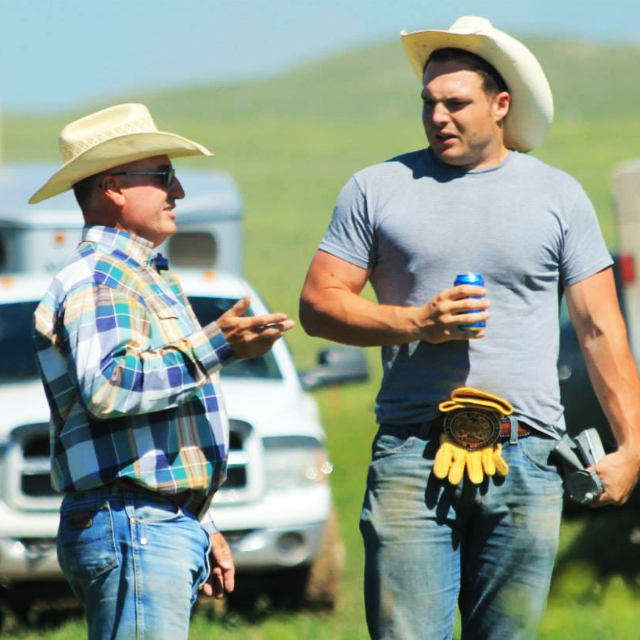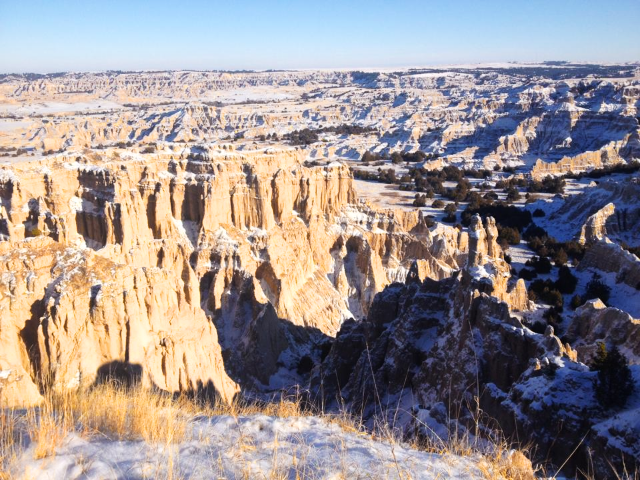Washington’s Militarized Land-Grabs: Targeting the Sioux Indian Reservation in South Dakota
Feds Threatening ‘Third Wounded Knee’ with Eminent Domain Land Grab on Sioux Indian Reservation

In the wake of a Bundy Ranch crisis sparked by a militarized federal land-grab effort in Nevada, it seems that the Department of Interior has set its sights on a new prize – this time targeting once protected Indian reservation land on Pine Ridge in South Dakota.
The Oglala Sioux and Lakota Sioux of the reservation have been told by the Federal Government that the National Parks Service will be taking land that comprises the South Unit of the Badlands National Park as a new ‘Tribal National Park’, only the wording in the bill clearly indicates that it will be a federally managed national park under the Department of Interior, giving mere lip service to its tribal title. The Congressional bill has already been written, and if passed through Congress, both tribal members and non tribal members will be stripped of their deeded land – at a price set by the federal government. If owners do not accept Washington’s offer (expected to be a meager one), the land can be acquired at no cost because the measure has waived all appraisal rights and stipulates that Washington can simply take Indian land by force under ‘eminent domain’.
Thousands of tribe members will be affected by the land-grab. Some residents will be forced to relocate, and many more others will lose their income from grazing allotments on the land – a result which will ultimately force any remaining independent cattle ranchers out of business. In addition to all this, Tribal members will lose their share of income from entrance fees collected at the adjacent North Gate of the Badlands National Park – a punitive measure which will further compound the existing economic depression on a reservation where the average annual income is around $8,000 per year.
Washington may be pining for yet another ‘Wounded Knee’, as many residents and tribal members are prepared to stand their ground in the face of a federal imperialist policy inside US borders – a trend which many Americans have experienced first-hand, particularly in western states like Utah, Nevada, New Mexico, Arizona and California.
Pine Ridge and Sioux cattle rancher Bud May with father Avery (Photo credit: Bud May)
Tribal member and local cattle rancher Bud May believes the issue is not confined to Pine Ridge.
May states, “There is a feeling of common cause between attached parties on this issue – namely tribes and other reservations. The bottom line is we’ll all be under dictatorial control if something is not done quick”.
The federal move initially gained traction after a Tribal Ordinance passed by the Tribal Council in the spring of 2013. Many Tribal members have been frustrated with the tribal council, which has gone against the will of the people to back the park. All 9 districts on the reservation have passed unanimous resolutions against the park along with the Shannon County Commissioners and several South Dakota State legislators.
Badlands’ located on the Pine Ridge Sioux Indian Reservation in South Dakota (Photo Credit: Bud May)
To add insult to injury, it appears that all landowners were only notified of the measure until after it had passed, with their first news of the federal plan coming in the form of eviction notices issued by the Bureau of Indian Affairs Land Operations department in the fall of 2013.
The Tribal Council of 19 has yet to allow a democratic referendum on the federal takeover, although sources confirm that the referendum option is on the agenda for next month’s council meeting.
‘Cowboys and Indian’ in Common Cause
The federal land-grab crisis was elevated to national news in April when Nevada independent rancher Cliven Bundy and his supporters stood toe to toe in an armed standoff with the the Department of Interior’s Bureau of Land Management (BLM) over Bundy’s private property and land rights which trace back to 1870′s.
Lory Storm, a Nebraska radio host who has been following recent developments at Pine Ridge describes the synergy now happening between what were previously strange bedfellows. Storm explains,
“The difference between this situation and the Bundy Ranch conflict? It will be the first time in the history of our Country that the Cowboys and Indians pose a united front against a federal government that is used to winning battles by first dividing and then conquering.”
Already, many land owners are taking the position that they will not comply with the latest order from the government – leaving many to wonder whether this potential standoff will become the third ‘Wounded Knee’ incident involving a standoff between the Sioux Nation and the US Federal government.
June 25th is the anniversary of the infamous conflict at the Little Big Horn between General Custer, the Northern Cheyenne and the Lakota Sioux, and this year’s anniversary will see residents of the Pine Ridge Reservation along with other protesters gathering again Wounded Knee to protest the theft of their land by the Federal Government.
Crowds will gather to protest and a symbolic ride will take place today, where tribal riders will be joined by riders from ranches in Nebraska and South Dakota in the afternoon at the Gordon Legion in a show of solidarity on the issue of private property rights and grazing rights.



